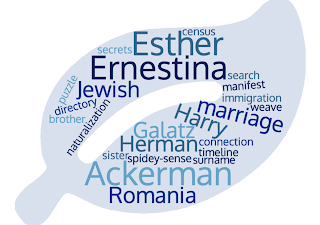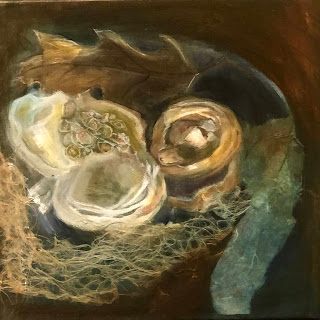As winter approaches, I begin to retreat from the world into my own private hibernation. Summer and fall saw me gathering with vaccinated friends outdoor for walks or coffee. With the new Covid variant and colder weather, I’m back in retreat mode. We had a brief reprieve and nervously committed to our Thanksgiving visit in Illinois which we had skipped in the prior year. In past years we had turned it into a mini-vacation, stopping at the Milwaukee Art Museum and the Art Institute in Chicago. Smaller and less crowded museums were satisfying substitutes.
Now back at home, much of my actual as well as emotional time is occupied with a possible move. It is intimidating and challenging, both to settle on a choice that satisfies both of us and the task of thinning unnecessary belongings in advance of a move. I imagine there is a break-even point where I will have disposed of enough to be able to fully imagine a move and it will become easier to pull the trigger if the right opportunity presents itself. My husband and I agreed that the first place we saw was really the best, but we were too new to this search to realize it at the time. It is of course long gone and had its shortcomings as well. I watch each of our possibilities slowly disappear into the hands of those more ready to commit. There are trade-offs with each choice and we are reluctant to accept them. We consider that this is likely our last move and that brings an added pressure to find the perfect choice. I frequently remind myself that there is no perfect in people, homes or jobs and I need to live in the world of the possible. Nice words, but hard to internalize.
Meanwhile, I look around at what we have gathered over the years and can’t imagine how to do the serious downsizing of belongings that is required. I tackle a little bit each day and can barely see the difference. This week I found a box of floppy disks in my closet and my husband found a place that would recycle them. Ah, but first, I wanted to see if there were any treasures on them. I had a portable disk reader rescued from my late father’s technology detritus that I could use to access them, but soon realized I would have to go through some machinations to make them readable. It is a strange thought that personal computers were still quite new at the time and the high density disks held 1.44MB. I look at my current files for a reference point and realize that could be one photograph.
Many were easily disposed of, but one had the enticing title of “letters.” To my surprise, I found it contained four years of letters to the long-distance beau who had preceded my husband. That made them about 30 years old, not to mention me about 30 years younger! It was a surprising time capsule into my life at that time. I was fascinated by who I had been as I felt quite distinct from that past version of me. I cheered her on as she stated clearly what she needed and empathized with the hard hitting letters she had second thoughts about that were titled “not sent.” Former self really had clarity about her life! She also could be a bit emotionally exhausting.
It wasn’t just the past me I was contemplating. It is staggering to think about that early world of computers when email was still quite new and most of my letters still went by mail. It was the last letter-writing relationship of my life, a form of communication that exposes so much of oneself. Even stranger was that the early letters were in a different format so at first I could only access the ones at the end when things were quietly crumbling and I was firing the occasional warning shot over the bow. Only later did I figure out how to open the earlier letters of those days of early infatuation and discovery. It was like reading a novel cleverly laid out in reverse. A shattered relationship reassembling itself into hopes long past. I found myself thinking that it would be an interesting format for a book although I would guess someone has done that already.
Even stranger was when I read my horoscope, something I have not done for many years. Whatever possessed me to do that? I had with some apprehension, read several of the early letters that day and it felt significant to meet my past self. Was the universe trying to tell me something? Perhaps so. Here’s what the horoscope said:
Old pictures, past social media posts and historic texts will be part of the texture of this day. Some artifacts make you smile. As for the cringeworthy ones, let them represent how far you’ve come. Celebrate growth.
As I reflect on the passing of time and the changes that occur within both us and our surroundings, I prepare to welcome a new and hopeful year. Perhaps one where I can gather once again with friends and stroll through crowded museums, a post-Covid time. I may even look back on this time fondly as I move into the future and celebrate the growth to which it has given birth.
























